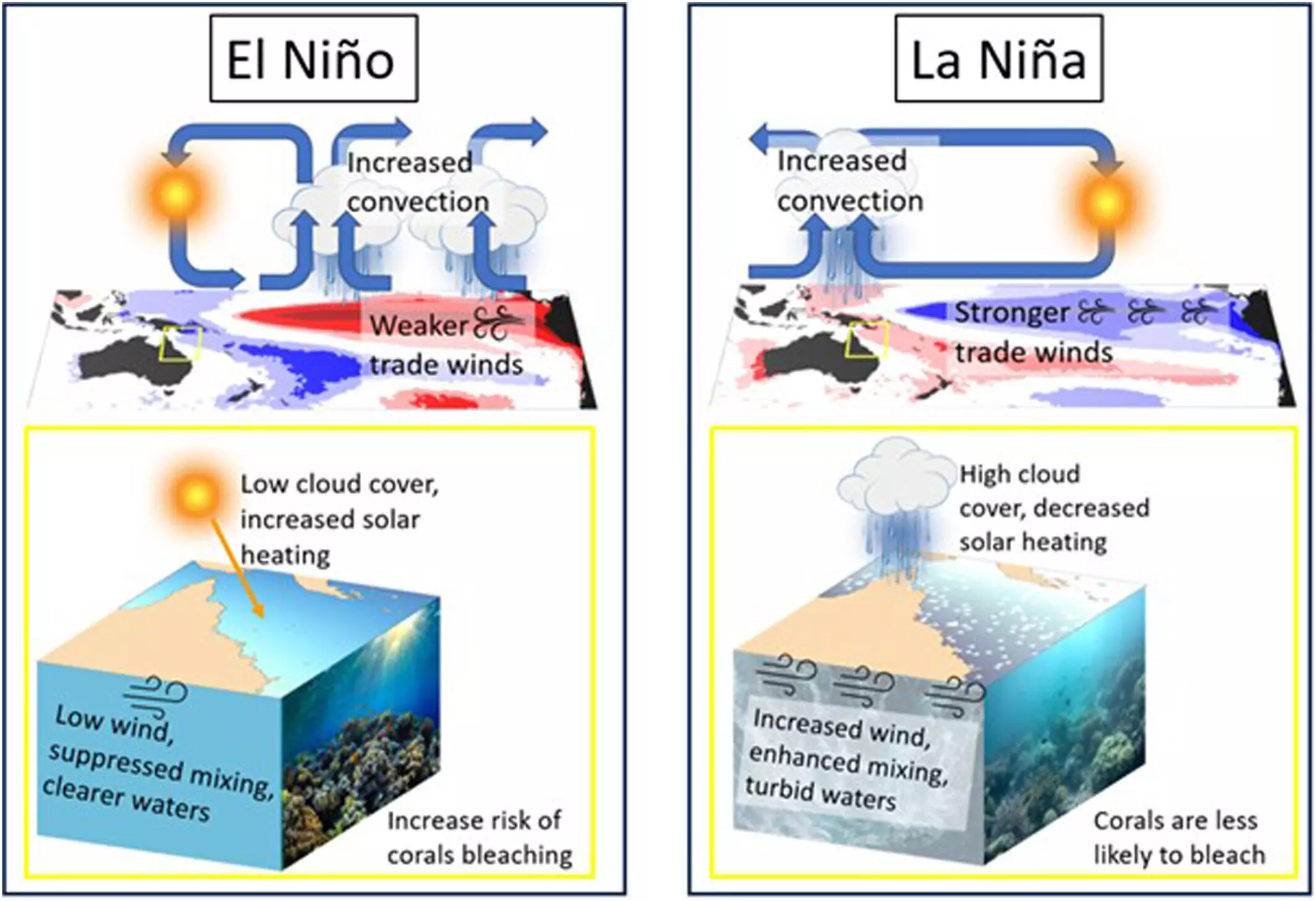The Great Barrier Reef (GBR) is a massive coral ecosystem along Australia’s northeastern coast, with significant biodiversity, cultural value, and economic importance. However, the increasing ocean temperatures due to climate change pose a serious threat to this iconic reef. A recent study has highlighted the influence of the Madden-Julian Oscillation (MJO) and El Niño Southern Oscillation (ENSO) on coral bleaching events in the GBR, shedding light on how these climatic phenomena affect weather patterns and ocean temperatures.
Corals in the GBR are highly sensitive to weather conditions, with sunny and calm weather leading to high ocean temperatures and increased risk of coral bleaching. Conversely, stormy and rainy weather can cool the ocean, providing some protection to the corals. This is due to the sunlight penetrating the water on calm days, heating the ocean’s surface, while storms and rain increase cloud cover and wind, promoting the mixing of cooler and warmer waters.
The study found that while ENSO influences weather patterns on a seasonal scale, the MJO can alter these patterns on shorter sub-seasonal timescales, leading to unexpected impacts on ocean temperatures and corals. The MJO, a major fluctuation in tropical weather, can significantly influence weather variability over the GBR, altering the expected states of El Niño and La Niña periods.
Lead author Catherine Gregory emphasized the need to consider drivers beyond ENSO in understanding extreme warming and coral bleaching events in the GBR. The study’s findings highlight the importance of forecasting models that incorporate both ENSO and MJO impacts to better predict and manage coral bleaching events. As climate change continues to threaten corals, understanding these climatic drivers and their interactions can be crucial for developing adaptive strategies to safeguard the future of the GBR.
The impact of climatic phenomena like the MJO and ENSO on coral bleaching events in the GBR is significant. Understanding how these phenomena influence weather patterns and ocean temperatures is essential for predicting and managing coral bleaching events. As the threats from climate change persist, it is crucial to develop comprehensive forecasting models that take into account these climatic drivers to protect the Great Barrier Reef and its invaluable ecosystem.



Leave a Reply